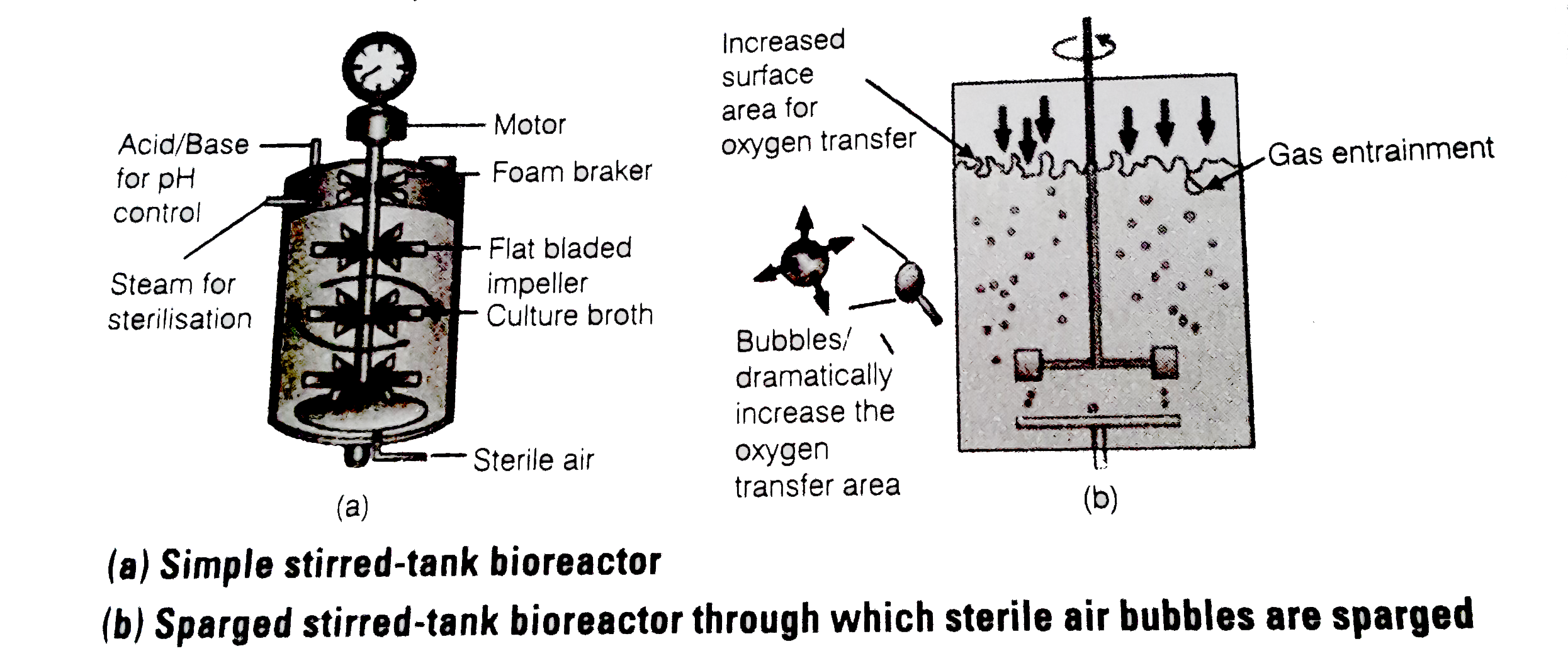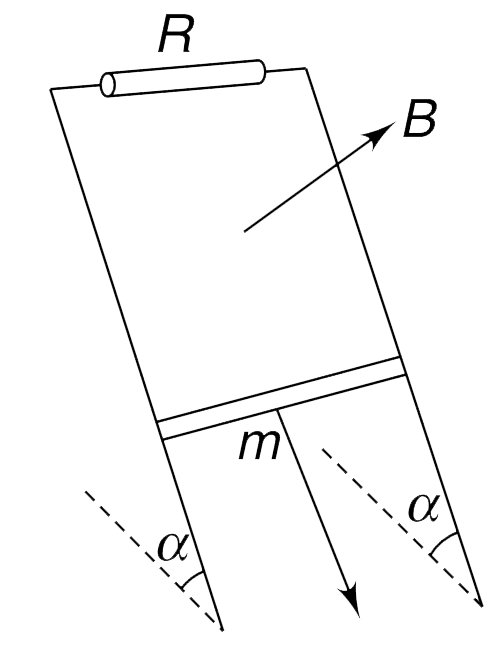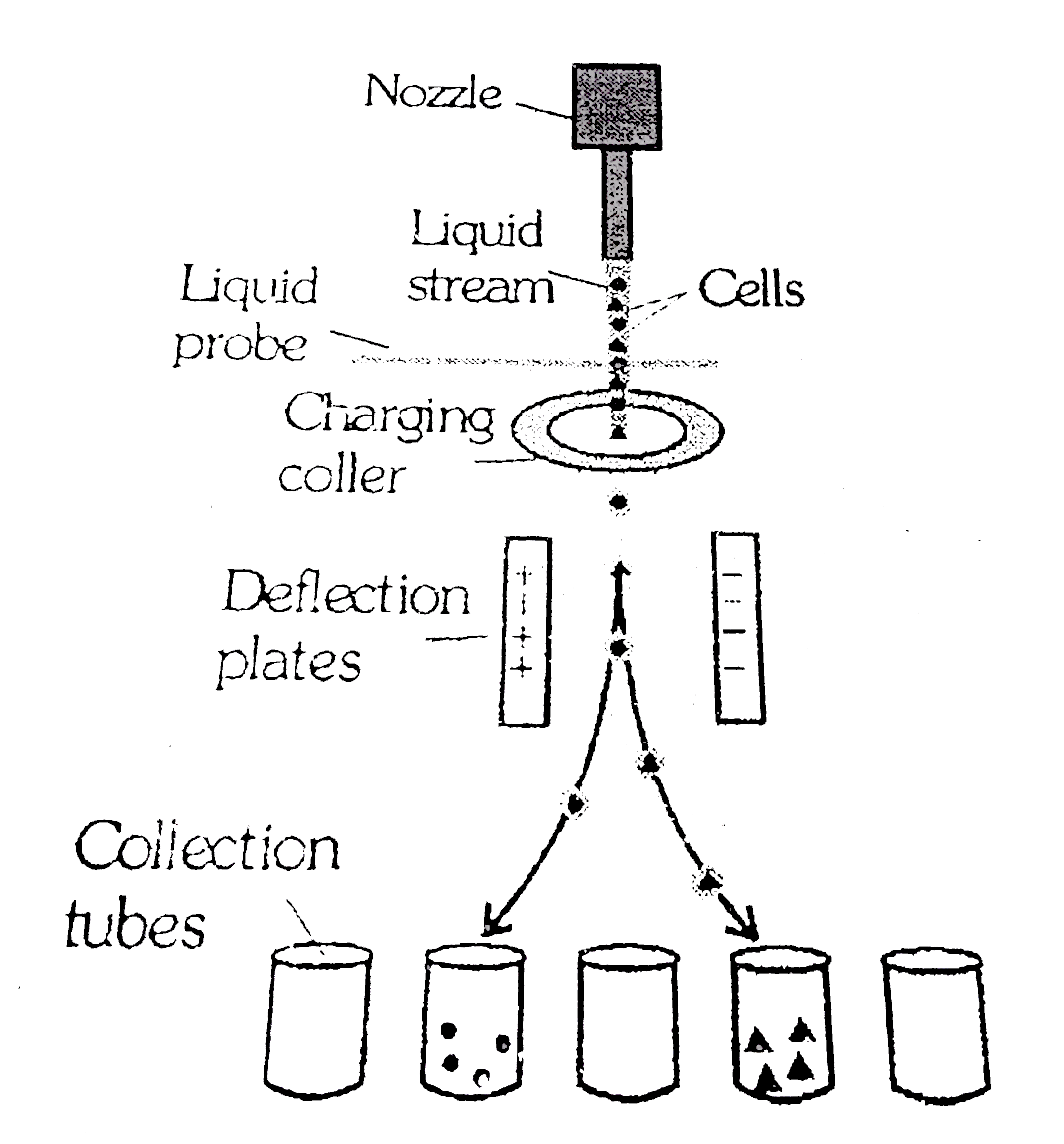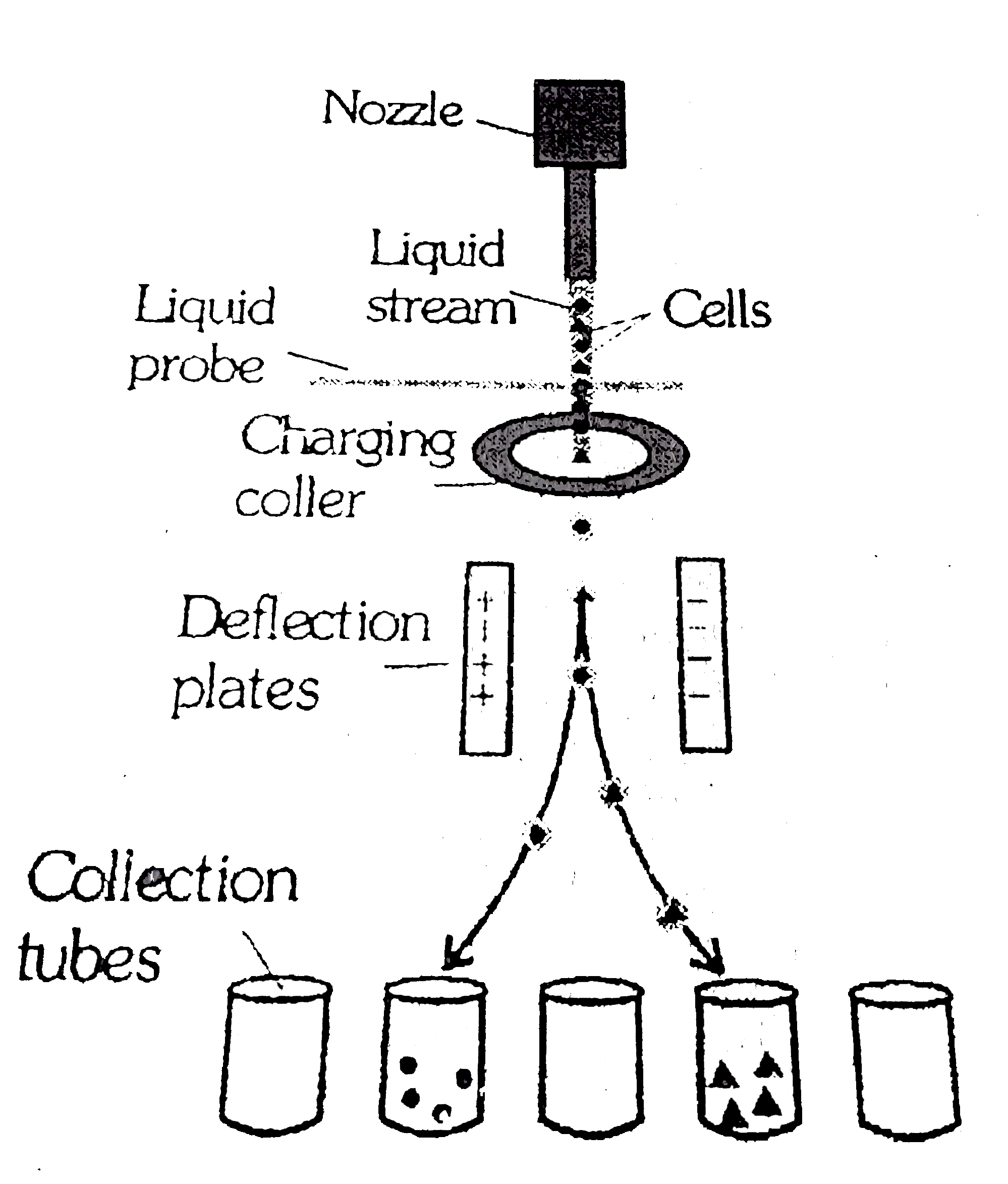Illustrate the design of a bioreactor. Highlight the difference between a flask in your laboratory and a bioreactor which allows cells to grow in a continous culture system.
Bioreactors are vessels of large volumes (100-1000L) in which raw materials are biological converted into specific products.
The most commonly used bioreactors are of stirring type, which are shown in figure.

A stirred tank reactor is usually cylindrical of with a curved base to facilate the mixing of the reactor contents. the stirrer facilitates even mixing an d ox ygen availability throughout the bioreactor. Alternatively air can be bubbled through the reactor.
If you look at the figure closely you will see that the bioreactor has an agitator system, an oxygen delivery system and a control systema temperature control system. pH control system and sampling ports so, that small volumes of the culture can be withdrawn periodically.
Small volume culutures are usually employed in laboratories in a flask for research and production of less quantities of produc ts? However, large scale production of the products is ca rried out in bioreactors.
Topper's Solved these Questions
Similar Questions
A copper connector of massm, starting from rest, slides down two conducting bars set at angle α to the horizontal, due to gravity (see figure). At the top the bars are interconnected trhough a resistance R. The separation between the bars is equal to l. The system is located in uniform magnetic field of induction B, perpendicular to the plane in which the connectr slides. The resistance of the bars the connector and the sliding contacts, as well as the self inductance of the loop, are assumed to be negligible. The coefficient of friction between the connector and the bars is equal to 12 and α
(a) Find the steady-state velocity of the connector.
(b) How will your answer differ if the magnetic field was in opposite direction.

View SolutionRead the following passages and answer the question that follow:
A major difference between the two superpowers and their respective empires was that the Roman Empire was culturally much more diverse than that of Iran. The Parthians and later the Sasanians, the dynasties that ruled Iran in this period, ruled over a population that was largely Iranian. The Roman Empire, by contrast, was a mosaic of territories and cultures that were chiefly bound together by a common system of government. Many languages were spoken in the empire, but for the purposes of administration Latin and Greek were the most widely used, indeed the only languages. The upper classes of the east spoke and wrote in Greek, those of the west in Latin, and the boundary between these broad language areas ran somewhere across the middle of the Mediterranean, between the African provinces of Tripolitania (which was Latin speaking) and Cyrenaica (Greek-speaking). All those who lived in the empire were subjects of a single ruler, the emperor, regardless of where they lived and what language they spoke.
Which empire was bound together by a common system of government and why?
View Solution
Knowledge Check
Which of the following is an advantage of a bioreactor which uses continuous culture system rather than batch culture?
AIt provides required growth conditions like temperature, pH substrate, salts, vitamins and oxygenBThe transformed recombinant cells are allowed to grow in a large bioreactor till maximum amount of biochemical has been formed.Cthe bioreactor is made empty, cleaned and a fresh medium is addedDThere is a regular drainage of the medium and culture cells from one side and fresh medium from the other side leading to higher yield of desired productA few countires are using powerful electromagnets to develop high speed trains, called maglev trains (also known as bullet trains). Maglev is short for 'magnetic levitation', which means that these trains will float over a guil way using the basic principles of magnets to replace the old steel wheel and track trains.
The big difference between a maglev train and a conventional train is that maglev trains do not have an engine. The engine for maglev trains is rather inconspicuous as instead of fossil fuels it uses magnetic field. The magnetised coil running along the track, called the guideway, repels the large magents on the trains's under carriage allowing the train to levitate between 1 to 10 cm above the guideway . This is called electrodyanmic suspension (EDS). Once the train is levitated, power is supplied to the coils within the guideway walls to create a unique system of magnetic fields that pull and push the train along the guideway. The electric current supplied to the coils in the guideway wall is constantly alternating to change the polarity of the magnetised coils. This change in polarity causes the magnetic field in fornt of the train to pull the vehicle forward, while the magnetic field behind the train adds more forward thrust.
Maglev trains float on a cushion of air eliminating friction. This lack of friction and the train's aerodynamic design allows these trains to reach unprecedented group transportation speed of 400kmh−1 or even more.
The force which makes maglev move isAgravitationalBmagnetic forceCeletric forceDair dragA few countires are using powerful electromagnets to develop high speed trains, called maglev trains (also known as bullet trains). Maglev is short for 'magnetic levitation', which means that these trains will float over a guil way using the basic principles of magnets to replace the old steel wheel and track trains.
The big difference between a maglev train and a conventional train is that maglev trains do not have an engine. The engine for maglev trains is rather inconspicuous as instead of fossil fuels it uses magnetic field. The magnetised coil running along the track, called the guideway, repels the large magents on the trains's under carriage allowing the train to levitate between 1 to 10 cm above the guideway . This is called electrodyanmic suspension (EDS). Once the train is levitated, power is supplied to the coils within the guideway walls to create a unique system of magnetic fields that pull and push the train along the guideway. The electric current supplied to the coils in the guideway wall is constantly alternating to change the polarity of the magnetised coils. This change in polarity causes the magnetic field in fornt of the train to pull the vehicle forward, while the magnetic field behind the train adds more forward thrust.
Maglev trains float on a cushion of air eliminating friction. This lack of friction and the train's aerodynamic design allows these trains to reach unprecedented group transportation speed of 400kmh−1 or even more.
The disadvantage of maglev trains isAless heat generatedBless pollutionCless wear and tearDhigh initial cost
Read the following passages and answer the question that follow:
A major difference between the two superpowers and their respective empires was that the Roman Empire was culturally much more diverse than that of Iran. The Parthians and later the Sasanians, the dynasties that ruled Iran in this period, ruled over a population that was largely Iranian. The Roman Empire, by contrast, was a mosaic of territories and cultures that were chiefly bound together by a common system of government. Many languages were spoken in the empire, but for the purposes of administration Latin and Greek were the most widely used, indeed the only languages. The upper classes of the east spoke and wrote in Greek, those of the west in Latin, and the boundary between these broad language areas ran somewhere across the middle of the Mediterranean, between the African provinces of Tripolitania (which was Latin speaking) and Cyrenaica (Greek-speaking). All those who lived in the empire were subjects of a single ruler, the emperor, regardless of where they lived and what language they spoke.
Name two dynasties who ruled over Iran during this period.
View SolutionA few countires are using powerful electromagnets to develop high speed trains, called maglev trains (also known as bullet trains). Maglev is short for 'magnetic levitation', which means that these trains will float over a guil way using the basic principles of magnets to replace the old steel wheel and track trains.
The big difference between a maglev train and a conventional train is that maglev trains do not have an engine. The engine for maglev trains is rather inconspicuous as instead of fossil fuels it uses magnetic field. The magnetised coil running along the track, called the guideway, repels the large magents on the trains's under carriage allowing the train to levitate between 1 to 10 cm above the guideway . This is called electrodyanmic suspension (EDS). Once the train is levitated, power is supplied to the coils within the guideway walls to create a unique system of magnetic fields that pull and push the train along the guideway. The electric current supplied to the coils in the guideway wall is constantly alternating to change the polarity of the magnetised coils. This change in polarity causes the magnetic field in fornt of the train to pull the vehicle forward, while the magnetic field behind the train adds more forward thrust.
Maglev trains float on a cushion of air eliminating friction. This lack of friction and the train's aerodynamic design allows these trains to reach unprecedented group transportation speed of 400kmh−1 or even more.
The levitation of the train is due to
View SolutionWhich of the following represents an advantage of growing cells in continuous culture as compared to a shake flask ?
View SolutionFlow cytometry, illustrated in the figure, is a technique used to sort cells by type. The cells are placed in a conducting saline solution which is then forced from a nozzle. The stream breaks up into small droplets, each containing one cell. A metal collar surrounds the stream right at the point where the droplets seprate from the stream. Charging the collar polarizes the conducting liquid, causing the droplets to become charged as they break off from the steam. A leser beam probes the solution just upstream from the charging collar, looking for the presence of certain types of cells. All droplets containing one particular type of cell are given the same charge by the charging collar. Droplets with other desired types of cells receive a different charge, and droplats with no desired cell receive no charge. The charged. The charges droplets then pass between two parallel charged electrodes where they receive a horizontal force that directs force that directs them into different collection tubes, depending on air charge.

View SolutionFlow cytometry, illustrated in the figure, is a technique used to sort cells by type. The cells are placed in a conducting saline solution which is then forced from a nozzle. The stream breaks up into small droplets, each containing one cell. A metal collar surrounds the stream right at the point where the droplets seprate from the stream. Charging the collar polarizes the conducting liquid, causing the droplets to become charged as they break off from the steam. A leser beam probes the solution just upstream from the charging collar, looking for the presence of certain types of cells. All droplets containing one particular type of cell are given the same charge by the charging collar. Droplets with other desired types of cells receive a different charge, and droplats with no desired cell receive no charge. The charged. The charges droplets then pass between two parallel charged electrodes where they receive a horizontal force that directs force that directs them into different collection tubes, depending on air charge.

Another way to sort the droplets would be to given each droplet the same charge, then vary the electric field between the deflection plates. For the apparatus as sketched, this technique will not work because
View Solution
